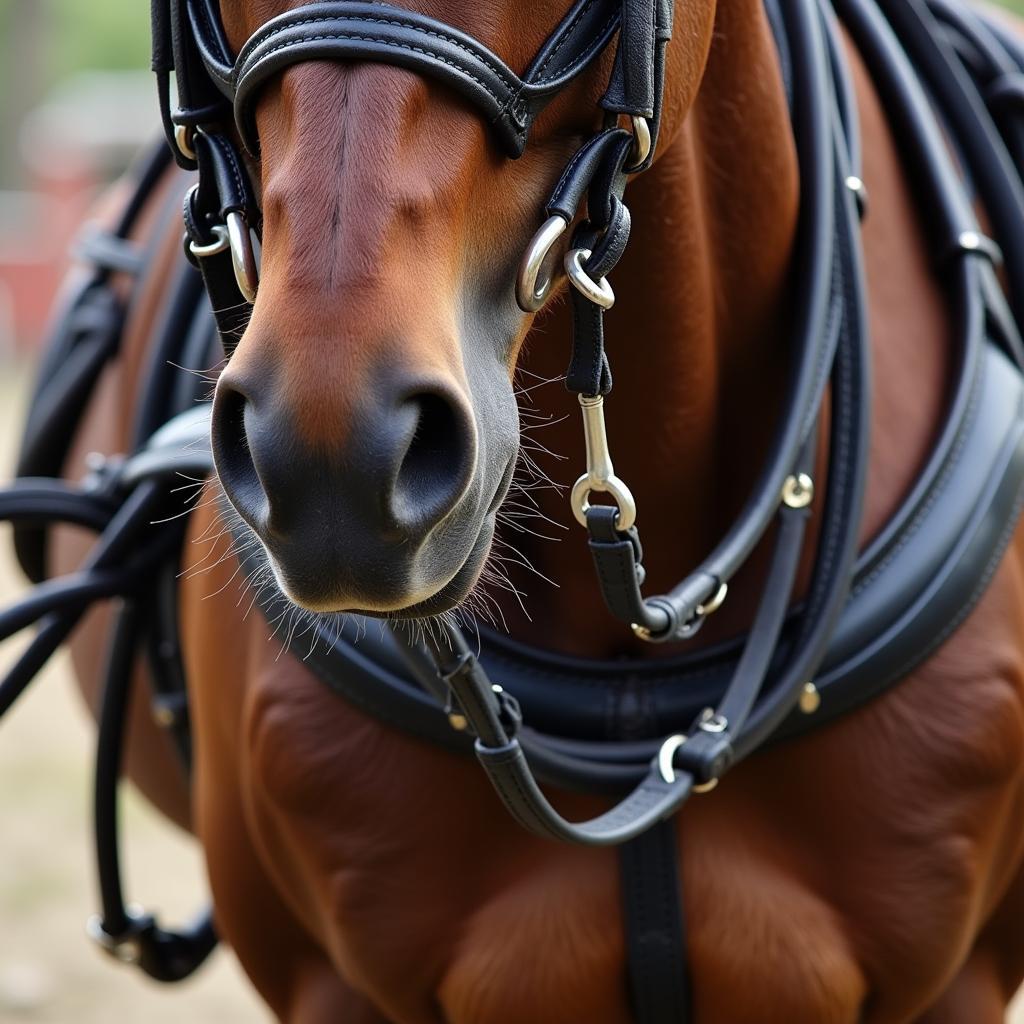Horse carriages, a charming echo of a bygone era, are more than just nostalgic relics. These intricate vehicles represent a rich history of craftsmanship and equine partnership. Whether you’re an enthusiast, a history buff, or considering incorporating a horse-drawn carriage into your life, understanding the parts of a horse carriage is essential. This comprehensive guide will delve into the components that make up these magnificent vehicles.
The Basic Structure: Body, Wheels, and Shafts
At its core, a horse carriage’s design revolves around functionality and elegance. The body serves as the primary passenger or cargo compartment. Its design varies greatly depending on the carriage’s purpose, from the simple open bench of a miniature horse carts for sale to the enclosed opulence of a Cinderella-esque pumpkin carriage.
Supporting the body are the wheels, crucial for movement. Traditionally made of wood with metal rims, these vary in size depending on the carriage’s size and intended terrain. Larger wheels, for instance, offer better maneuverability on uneven roads.
Connecting the carriage to the horse are the shafts or poles. Shafts, usually found in pairs, attach to a single horse or a team harnessed side-by-side. In contrast, a single pole extends from the carriage’s center, intended for a two-wheeled vehicle pulled by one horse.
The Power of Harnessing: Harness and Draft Components
The harness, a complex system of straps and fittings, is crucial for hitching the horse to the carriage and allowing it to pull effectively. The collar, a padded structure fitting over the horse’s shoulders, is key, distributing the pulling weight evenly to prevent injury.
Attached to the collar is the hames, a framework connecting the collar to the traces, which are strong straps directly transmitting the horse’s pulling force to the vehicle.
 Horse Carriage Harness Components
Horse Carriage Harness Components
Controlling the Ride: Brakes and Steering
To ensure a safe and controlled journey, horse carriages incorporate various braking and steering mechanisms. The brake, often a foot-operated lever, applies pressure to the wheels, slowing down or stopping the carriage.
Steering is achieved through the reins, connected to the horse’s bit, allowing the driver to guide its movements. Additionally, some carriages feature a whiffletree, a pivoting bar connecting the traces to the carriage, enabling the horse to turn more effectively.
Adding Comfort and Style: Accessories and Ornamentation
Beyond the functional components, horse carriages often feature a range of accessories that enhance comfort, practicality, and aesthetics. Lamps illuminate the path ahead, while mudguards protect passengers from road debris.
 Luxurious Horse Carriage Interior
Luxurious Horse Carriage Interior
Ornamentation varies greatly depending on the era and the carriage’s purpose. Intricate carvings, luxurious upholstery, and decorative metalwork are just a few examples of the craftsmanship that transformed these vehicles into works of art.
Conclusion: Appreciating the Complexity of Horse Carriages
Understanding the parts of a horse carriage allows for a deeper appreciation of these vehicles. From the sturdy framework to the intricate details of the harness and the elegance of the accessories, each element plays a crucial role. This knowledge not only enriches our understanding of history but also informs contemporary horse-drawn carriage enthusiasts, ensuring the tradition continues safely and responsibly.
FAQs about Horse Carriage Parts
1. What is the purpose of the dashboard on a horse carriage?
The dashboard serves as a protective barrier for passengers, shielding them from mud, rocks, and other debris kicked up by the horse’s hooves.
2. What is the difference between a shaft and a pole in horse carriage terminology?
Shafts are used in pairs, attached to a single horse or a team harnessed side-by-side. A pole is a single element extending from the carriage’s center, used for two-wheeled vehicles pulled by one horse.
3. Why is proper harness fitting crucial for a horse pulling a carriage?
A poorly fitted harness can cause discomfort, pain, and even injury to the horse, potentially leading to inefficient pulling and unsafe situations.
4. How do the brakes on a horse carriage work?
Most horse carriage brakes are foot-operated levers that apply pressure to the wheels, creating friction and slowing down or stopping the vehicle.
5. Are there different types of wheels used on horse carriages?
Yes, wheel size and design vary based on the carriage’s size, purpose, and intended terrain. Larger wheels generally offer better maneuverability on uneven surfaces.
For any assistance, please contact us at Phone Number: 0772127271, Email: [email protected] Or visit us at QGM2+WX2, Vị Trung, Vị Thuỷ, Hậu Giang, Việt Nam. Our customer service team is available 24/7. You might also want to check out our other resources on ac horse trailer, horse drawn machinery, and draft horse harness parts.